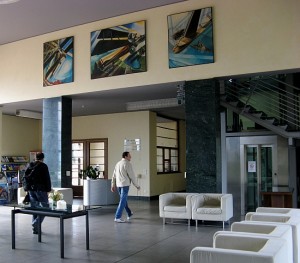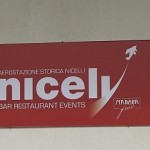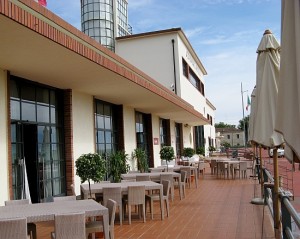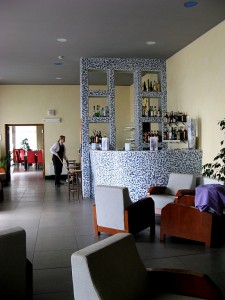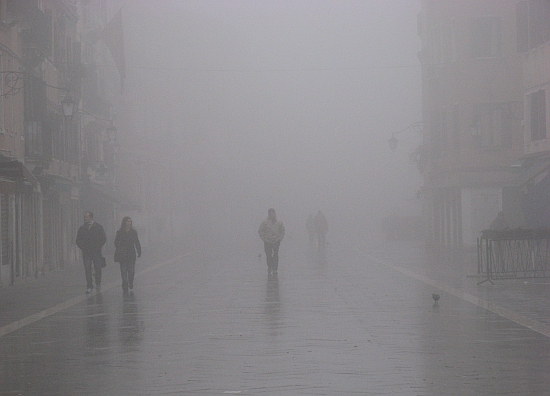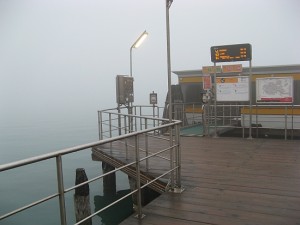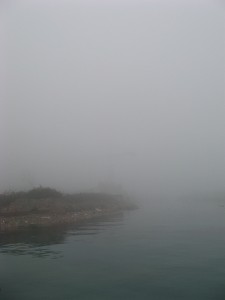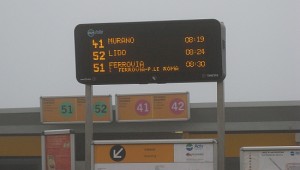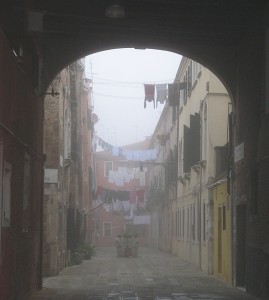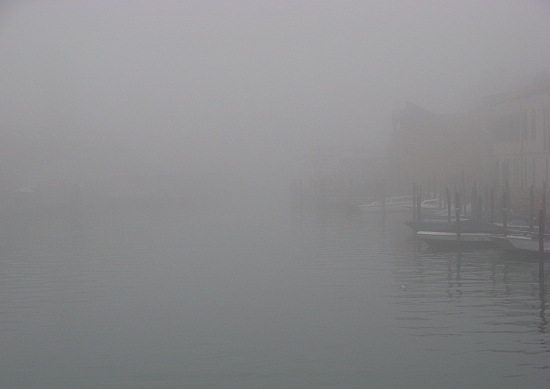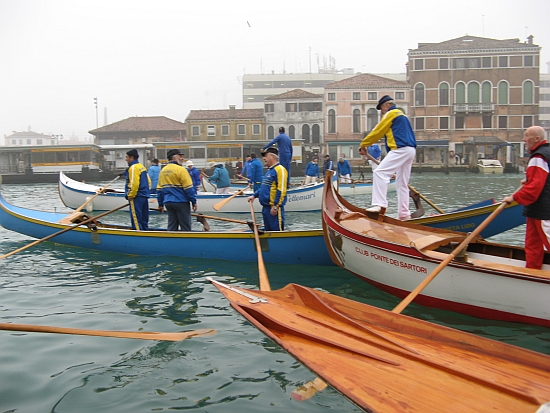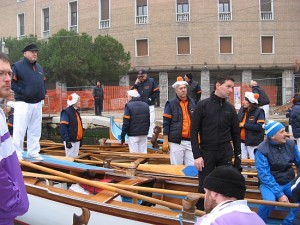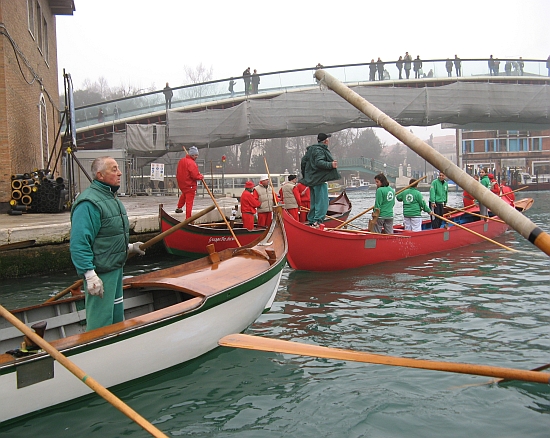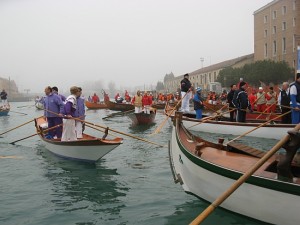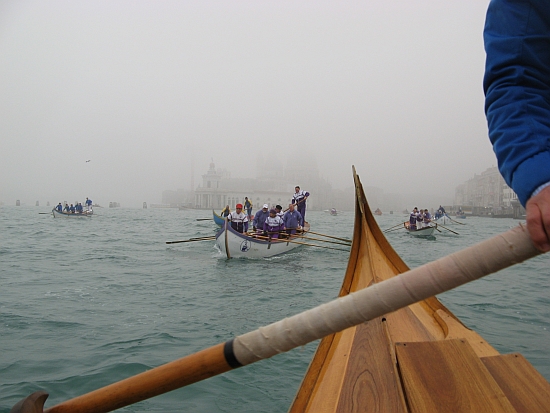Today marks the 100th anniversary of the first flight in Venice. This might sound like a quaint bit of trivia, if one didn’t know (which one is about to) how important Venice was in the history of Italian and also, may one say, European, aviation.
So pull your minds for a moment from the canals and consider the heavens. I myself am not a connoisseur of the aeronautical, but I am always interested in history, especially in “firsts,” especially if they actually mattered.
On February 19, 1911, Umberto Cagni took off from the beach in front of the Excelsior Hotel on the Lido in his Farman II airplane, and made six brief flights, in spite of the fog. (ACTV, please note.) On March 3, better weather encouraged him to fly, for the first time ever, over Venice.
A few months later, on September 19, 1911, the first airmail flight in Italy departed from Bologna and landed on the Lido. That is to say, Venice.
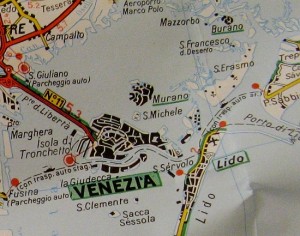
Geography is destiny, as Napoleon observed, and Venice’s position was obviously as valuable to air transport as it had been for centuries to shipping. At that time, the Lido was largely uninhabited, making it the ideal place to establish an airport.
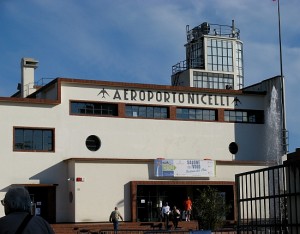
The first was built in 1915, a military base on the northernmost part of the Lido, which was active during World War I. Then, in 1935, with some major variations, it became the Aeroporto Nicelli, and air became yet another way, in the march of progress, to get to Venice. Flights on Ala Littoria and Transadriatica connected the famously watery city to points scattered around Europe. Even to Baku, if you happened to be going that way.
Nicelli immediately became the scene of extremely glamorous arrivals, as movie stars deplaned on the grassy runway to attend the Venice Film Festival. This continued until 1960, when Marco Polo airport opened on the mainland.
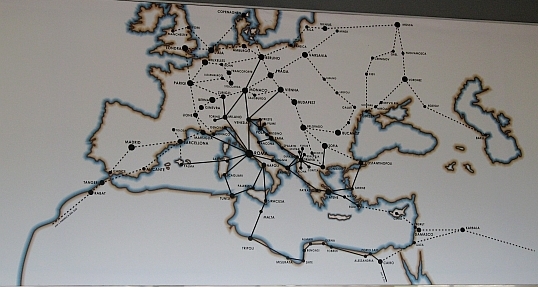
So far I may have made it sound as if all these things were accomplished by an occult hand. But of course many hands were involved, among which none were more important than those of the late Lt. Col. Umberto Klinger.
Klinger, a native Venetian, was already a celebrity by the time he created the Officine Aeronavali at Nicelli, a large workshop dedicated to repairing and maintaining airplanes.
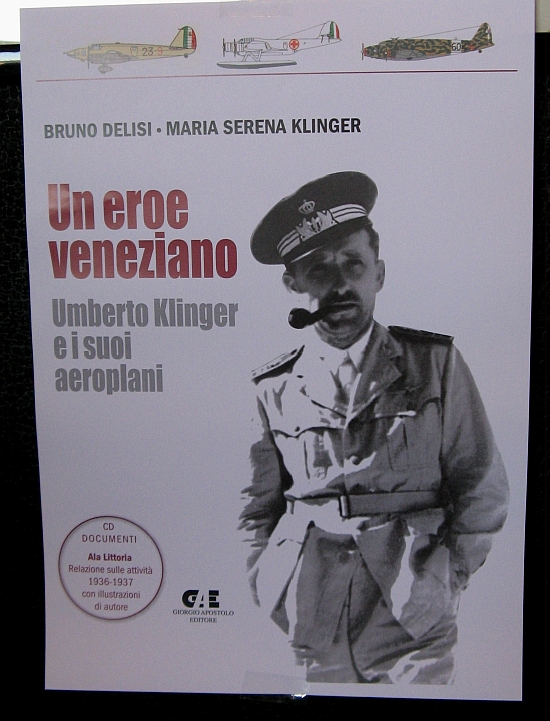
A highly decorated pilot in World War II, with more than 5,000 hours of flight to his credit, 600 of which were in combat, he earned 5 silver Medals of Military Valor. He also served as Chief of Staff of the Special Air Services of the Italian Air Force, not only organizing the activities of squadrons of Savoia-Marchetti S.75s (troop transports or bombers), but also flying them himself, often at night, over enemy territory. He was president of the first passenger airline in Italy (Ala Littoria), and four other companies. Far from being a mere figurehead, Klinger raised Nicelli to the level of the second airport in Italy.
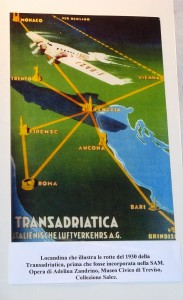
Lino, for example.
Lino went to work for the Aeronavali as an apprentice mechanic at Nicelli in 1954, at the age of 16. He often saw “Comandante Klinger,” and even spoke with him on various occasions. Right up to today, Lino pronounces his name with reverence and regret. This wasn’t unusual — Klinger was by all accounts a powerfully charismatic man admired for his courage, respected for his skill, but with a special gift for inspiring real love.
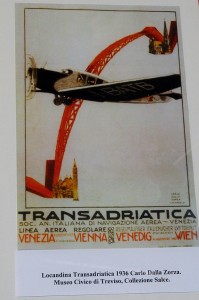
The Aeronavali flourished, with hundreds of employees working on aircraft of all sorts, from the Italian Presidential plane to cargo and passenger planes of many different companies. When Marco Polo airport opened on the mainland in 1960, the Aeronavali moved to the mainland with it.
Then politics began to set in. The broad outlines of what is undoubtedly a hideously complicated story are that certain elements in Rome, wanting to gain control of the company in order to place it under state, rather than private, administration, began to create financial problems for Klinger. The Aeronavali kept working, but payments from the Ministry of Defense were mysteriously not coming through. And the unions, manipulated by the aforementioned political factions, began to stir up discontent.
Lino remembers the increasingly tense meetings of the workers and the unions. He remembers Klinger pleading with them to be patient as he struggled to reopen the financial flow. But the unions rejected any compromises on pay or contracts, however temporary they might be, compelling the workers to resist. They ultimately even went on strike for 72 hours. Celebrity or no, the man — who had looked after his employees with no less solicitude than he had cared for his pilots — was running out of fuel.
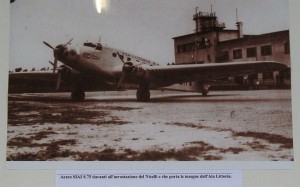
During these harrowing days, Klinger was heard to say more than once that what was needed to resolve this impasse was “something really big.” He ultimately thought of something that qualified.
Early in the morning of January 26, 1971, he went alone to the old hangar at Nicelli, by that time virtually abandoned. And he took a cord. A few hours later, when the guardian made his rounds, he discovered the body of Comandante Klinger. He had hanged himself.
Lino remembers the gathering at work that morning, when they were given the news. There was utter silence, he recalls, though if stricken consciences could make an audible noise there would have been plenty of that.
The first time I heard this story, I thought his was the despairing last act of a man who had run out of hope. Now I am convinced that Klinger’s suicide was an act of voluntary self-immolation in order to save the company — not unlike the Russian officers after the fall of Communism who, left unpaid, finally killed themselves so their widows would get their pensions.
And Klinger turned out to have won his gamble. Almost immediately, the overdue funds began to pour in.

The funeral, in the church of San Nicolo’ next to the airport, was attended by a huge number of mourners; many had to stand outside. Did any union officers come to pay their last respects? “Sure,” Lino said. “They were at the head of the line.”
Courage in combat — it isn’t needed only in the skies. Nor does it only involve things that explode, though they can still be fatal. Umberto Klinger deserves another medal, one which doesn’t seem yet to have been created.
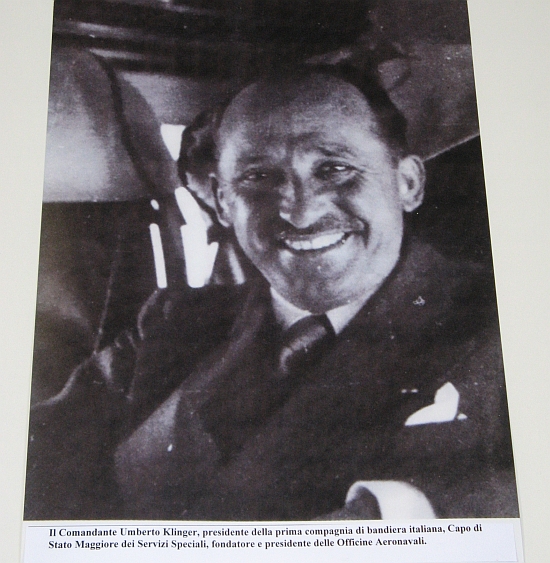
Postscript: It’s very easy to visit the airport. At the central vaporetto stop on the Lido at Piazzale Santa Maria Elisabetta, take the “A” bus marked for “San Nicolo’ – Ple. Rava’.” (If the weather’s nice, you can just stroll along the lagoon embankment for about half an hour.) Get off at the last stop, in front of the church and walk a few minutes across the grass and up the driveway.
The terminal has been spiffed to a modern version of its former glory, with a cool retro-design restaurant, “Niceli.” Have lunch, or just a coffee or drink on the terrace. If you come toward the early evening in the summer, bring lots of mosquito repellent.
